What my tools do while I’m sleeping 😉

I did sewing today finally! English Fitted Gown I took on to keep a friend from lighting it on fire, went on its way to the post office today along with a gift that I quickly hand sewed an hour before.
I drafted, cut and sewed a pair of trunkhose. I then unpicked them because I once again tried to bag line them and ended up with an endless case of pants. Got that sorted by unpicking the crotch seam and pulling it out the leg hole and sewing it back together and then tacking the crotch seams together.
Tomorrow is making the pants poof, tacking a few more things in place, waistband, and possible codpiece. No eyelets until I get a final fit on a doublet and that will not happen until Sept. Also need to mock-up the doublet in the extra twill fabric I have with me. Hopefully I have enough.
Started to pack up for the move! My fabric is all in boxes and safe from the cat for now.
Tonight I need to cut out my half sleeve, that I made too small last time and then my long neglected screaming red kirtle will be done.

Pattern Adjustments and Mock-ups
To me this is the annoying and tedious part of sewing, but once it is done we will have a bodice pattern that fits and we can use for various projects. If you already have a block pattern by all means use it. I’m starting from the beginning because this is stuff I wish I knew when I was starting out.
Materials:
Pencil
A small scrap of cardboard
Tape
Measuring tape
A long Ruler
Paper to trace your pattern on
Muslin or calico for Mock-up(s)
Scissors
Narrow Elastic or Ribbon
Tracing Wheel (optional)
A pin
Measurements:
To start we need a few measurements, so take a second to change into a fitted knit top and if you wear extra support under your garb put that on too. I’m wearing modern jeans to show where where your waist is not.
Natural waist: ________ Take string or narrow elastic and tie it snug around your waist, wiggle around from side to side till it settles. Make sure it isn’t twisted like mine is. This trick for finding the waist doesn’t always work, so a second way of finding it is to look at where your elbow falls, that will roughly tell you where your true waist is. (Thank you Elizabethan Costume facebook group for teaching me that proportional trick.)

Since getting The Queen’s Servant’s I’ve been coveting the pointed hood with a sort of fiendish glee, it also might be an under layer to the strange headdress in Holbein the Younger’s drawing.
A month ago I scaled up the pattern and made a mock-up. It was huge, it devoured my head. I have a normal size head, but the hat made it look like a peanut.
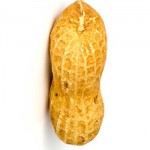
Thinking perhaps I scaled it up wrong I set about slashing the pattern and scaling it down to no avail. I took in the mock-up 3 or 4 times before toss it in the corner.
It was Franken-hood. I don’t have any photos of the monstrosity.
Tonight I decided to try it again, I took 3 or 4 measurements and scaled the pattern up to my head depth and jaw level.
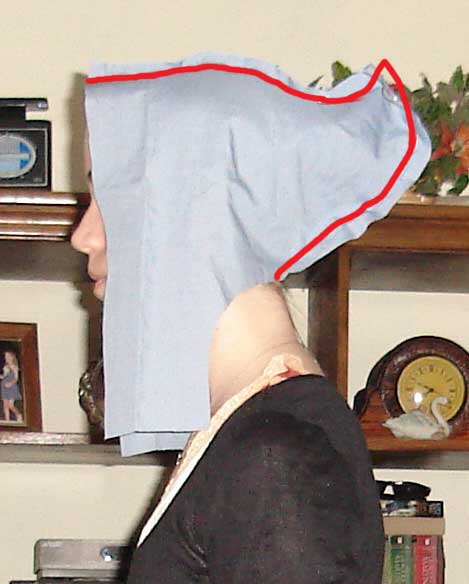
It wasn’t bad, but I wasn’t happy with the shape in the back, it didn’t look cute, it looked like I had a copernican attached to my bun.
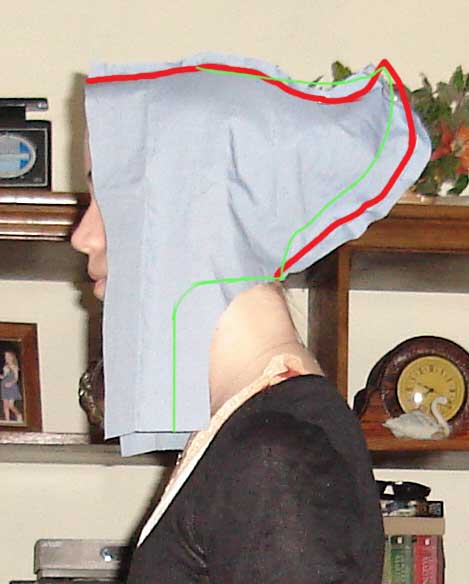
Much cuter. But something niggled at the back of my mind. Why was the scaled up pattern from the book so big? I went back and looked at the scale ratio and reread the instructions, then I noticed the little line drawing on the side. The round hood had the front folded back. This wasn’t mentioned anywhere in the book, and it is hard to see from the photos when everything is black velvet on black velvet.
So I scaled up the original pattern again.
Another round of pinning and I have this when I fold back the front edge and let it form the frontlet.
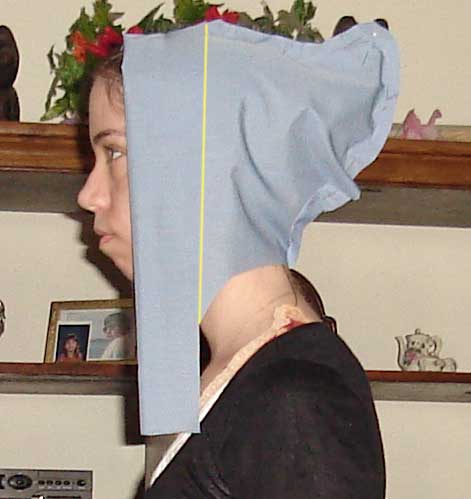
Much much better. The simple version in the book doesn’t look like it is worn with a separate frontlet, so I am going to use the frontlet pattern as a facing for the turn back portion of the hood.

I’ve been a bit neglectful of posting since I was down to the wire with the Green Tudor Gown. It is and it had its first outing, but I don’t have pictures yet. I have a list of excuses but first and foremost the temperature has shot up into the mid 80’s. For Florida which is a bit much for this time of year, add to that layers of velvet and silk and I’m looking at one very warm afternoon.
Once I get some time charted out, a good camera and can rope someone into it I will get some pictures taken, hopefully before it hits 90 degrees and I implode.
Now that the Tudor Gown of Doom is out-of-the-way I’ve started fussing with a few more projects. I’m doing more pattern drafting and trying to teach myself grading from a book that gives very little in the way of instructions. If I can get it working to my satisfaction I’ll shoot a video on it, in the hopes it will help someone else.
There is very little grading information on the web that is easy to understand and makes sense. It process isn’t actually hard, move and shift the master pattern around if doing it by hand.
The fuzzy part is the grading rules and where the increases and decreases go. I have a ton of thoughts on this but that will be a post in itself.
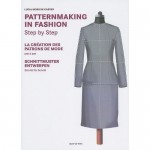
A few days ago I was catching up on the posts over at Fashion-incubator and saw that the site owner, Kathleen Fasanella had given a nice review of the book “Patternmaking in Fashion step by step”.
(And because of the title I have had the New Kids on the Block song stuck in my head. I was never a fan of them growing up, but still the horrible music stays with me.)
Amazon has it for only about 10 dollars so I placed an order and for most of today been stalking the ups tracking number. The book does not deal with historical clothing in any way shape or form but I am trying to expand my drafting knowledge.
I already have Jack Handford’s “Professional Patternmaking for Designers: Women’s Wear and Men’s Casual Wear“. Which I’ve read through several times and find most of it well explained. The line drawings at times and the text are not always enough. I had some confusion with the bust apex measurement and how they related to one of the drafts, but after reading it over a few more times it started to make sense.
Unfortunately, Handford’s book on grading seems no longer easily affordable or available and I have yet to come across any affordable alternatives. If anyone has any book suggestions for pattern grading please let me know in the comments. =)
For now I’ll go back to refreshing the ups tracking number every 2 minutes.